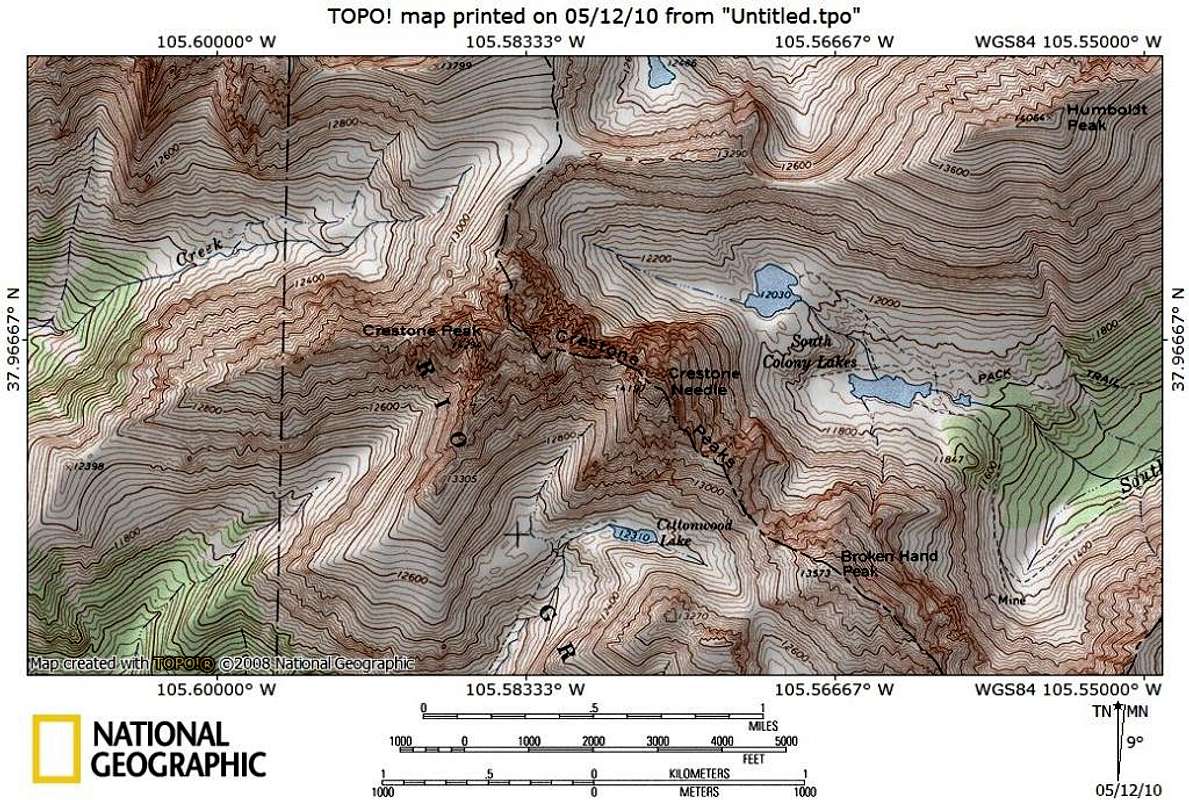Re: Biggest Alpine Face in Colorado
Posted: Wed May 12, 2010 4:58 pm
Below are some of the big cliff faces in Colorado that were mentioned in the thread and I threw in a few more for good measure. Obviously there are a lot more than these. All maps are at the same scale (default) so you can compare the steepness and height of each.
Alpine
Blanca Peak:
Up to 1500 feet depending on how you measure.

Capitol Peak:
Up to 1900 feet, depending on how you measure. Not as steep as cliffs such as The Diamond, Painted wall or Warm Springs.

Challenger Point/Kit Carson:
Possibly up to 1000 feet, but this is pushing it. From below the faces appear pretty steep, but they aren’t nearly as steep as some of the other ones.

Crestones:
Up to 1800 feet on the Needle, depending on how you measure.

Echo and McCauley:
1100-1200 feet depending on how you measure.

Longs:
Up to 1800 feet depending on how you measure. The Diamond itself is said to be 1300 feet.

Pyramid:
Up to 1800 feet depending on how you measure.

Vestal:
Up to 1200 feet depending on how you measure.

Non-Alpine
Peak 7071, Warm Springs Cliff:
The SW face of Peak 7071 is higher (~2000 feet), but Warm Springs Cliff (~1700 feet) is steeper (and still a ranked peak), though there is a class 2 walkup route.

Painted Wall:
The west end is very steep for nearly 2300 feet. It’s not a peak though.

Alpine
Blanca Peak:
Up to 1500 feet depending on how you measure.

Capitol Peak:
Up to 1900 feet, depending on how you measure. Not as steep as cliffs such as The Diamond, Painted wall or Warm Springs.

Challenger Point/Kit Carson:
Possibly up to 1000 feet, but this is pushing it. From below the faces appear pretty steep, but they aren’t nearly as steep as some of the other ones.

Crestones:
Up to 1800 feet on the Needle, depending on how you measure.

Echo and McCauley:
1100-1200 feet depending on how you measure.

Longs:
Up to 1800 feet depending on how you measure. The Diamond itself is said to be 1300 feet.

Pyramid:
Up to 1800 feet depending on how you measure.

Vestal:
Up to 1200 feet depending on how you measure.

Non-Alpine
Peak 7071, Warm Springs Cliff:
The SW face of Peak 7071 is higher (~2000 feet), but Warm Springs Cliff (~1700 feet) is steeper (and still a ranked peak), though there is a class 2 walkup route.

Painted Wall:
The west end is very steep for nearly 2300 feet. It’s not a peak though.
